Abstract
The average age of male workers between 15 and 64 indicates the structure of the economy and the maturity of the labor market. In countries like Moldova, where the average age is high at 44, the ageing of the workforce is prominent. This could be indicative of a declining birth rate, an outflow of young people, and the effects of an ageing society. Generally speaking, countries with developing economies or those in transition tend to have older workers. Conversely, in developed countries where young people have a greater input into the labor market, the average age tends to remain relatively low. These data are important indicators for understanding each country’s economic situation, policies, and social background.
Male workers aged 15-64, average age
Considering data from 1981 to 2021, the change in the average age of male workers reflects changes in each country’s economic situation and social structure. Moldova’s population ageing of 44.9 years in 2018 is a result of economic transition and social changes. This peak age reflects an ageing workforce, particularly one impacted by fewer young people in the labour market and a shrinking population. The current figure of 98% suggests that a range of factors are keeping the population ageing, including economic factors, labour market fluctuations and the impact of immigration. Overall, the increase in the average age of the workforce is seen in both developed and developing countries and is linked to labour market stability and demographic trends.
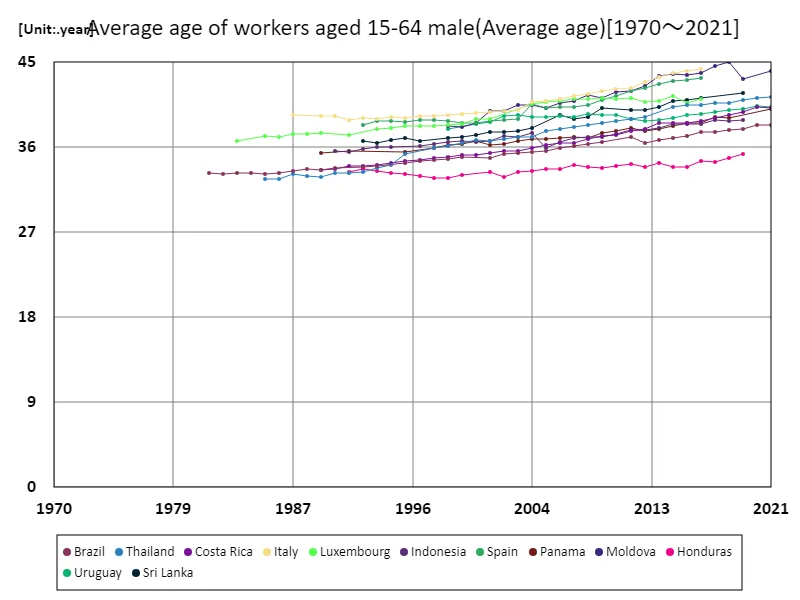

The maximum is 44.9year[2018] of Moldova, and the current value is about 98%
Average age of male workers aged 15-64 (worldwide)
In data from 1981 to 2021, the fluctuations in the average age of male workers aged 15 to 64 reflect economic development and changes in social structure. Georgia’s ageing, recorded at 45 years in 2016, signals a shift in the country’s economic situation and labor market. This ageing population may be due to long-term economic difficulties, a shrinking labor force, and an outflow of young people. Currently, Georgia’s average age remains at 94.5% of its peak, indicating that despite the stabilization of the labor market and the recovery of the younger generation, the population is still aging. In general, the rise in the average age of male workers is a phenomenon seen in developed as well as developing countries, reflecting an aging population and the difficulty young people have in entering the labor market. The average age often fluctuates due to economic growth and changes in labor market policies, and each country’s economic background and social factors have a major impact.
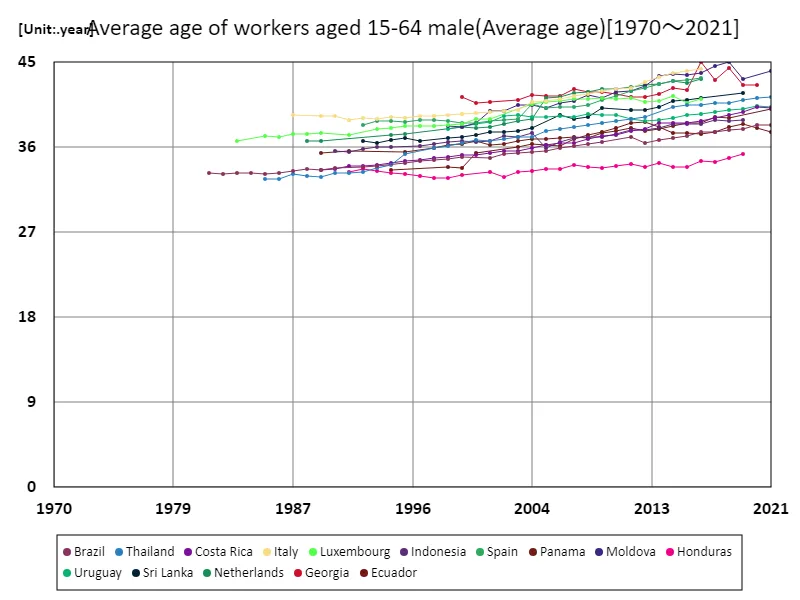

The maximum is 45year[2016] of Georgia, and the current value is about 94.5%
Male workers aged 15-64, average age (world, latest year)
According to 2021 data, the average age of male workers aged 15-64 is 38.5 years, with Moldova recording the highest average age at 44 years. These figures reveal an ageing trend in the labour market. In particular, countries with a high average age, such as Moldova, often reflect periods of economic transition and demographic change. Factors behind the ageing population include a declining birth rate, a decrease in the young population, or an outflow of young people due to a lack of economic stability. On the other hand, the total age of 616 indicates that the total workforce spans a wide range of age groups. This gives insight into the diversity of the labour market and the balance between generations. In ageing countries, labor market flexibility, pension systems and health care become more important. With low youth participation, labor market reforms and strengthened education and training are needed to sustain economic growth. Overall, the increase in the average age of the workforce is a common phenomenon in both developed and developing countries, reflecting changes in each country’s economic policies and social structures.
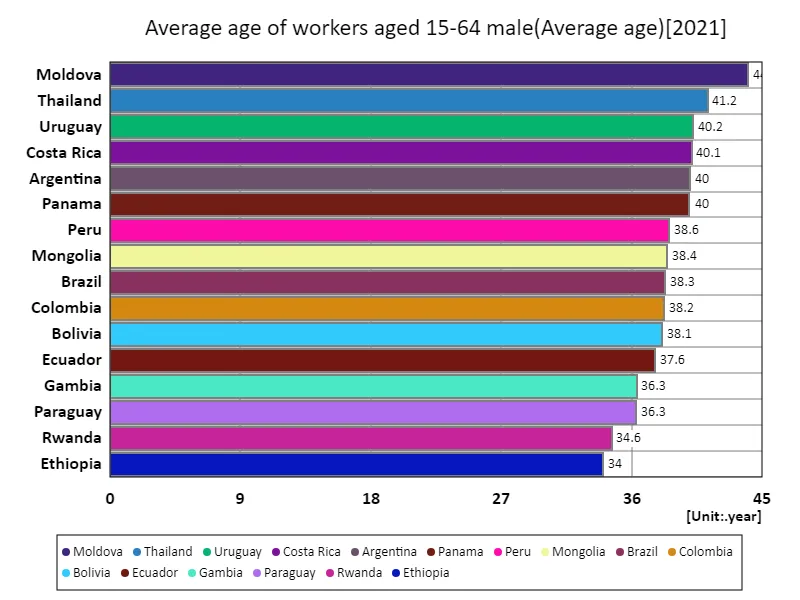

The maximum is 44year of Moldova, the average is 38.5year, and the total is 616year
Male workers aged 15-64, average age (region, latest year)
Data from 2008 show that the average age of male workers aged 15-64 was 33.3 years, with the Central African Republic recording the highest age. The data reflects labour market characteristics and demographics, particularly in low- and middle-income countries. In countries like the Central African Republic, the relatively low ageing of the workforce may be due to the lack of economic development. This results in a labour market with a large young workforce and a relatively low average age. The average age of 33.3 years old indicates that the overall workforce is composed mainly of young people. This means higher birth rates and more opportunities for young people to join the labour market. On the one hand, while large-scale youth participation represents potential for economic growth, it can also come with challenges such as education and skills shortages and labor market instability. Overall, the data are indicative of the stage of economic development and structural characteristics of labour markets in low- and middle-income countries, reflecting a relatively slow progression of population ageing.
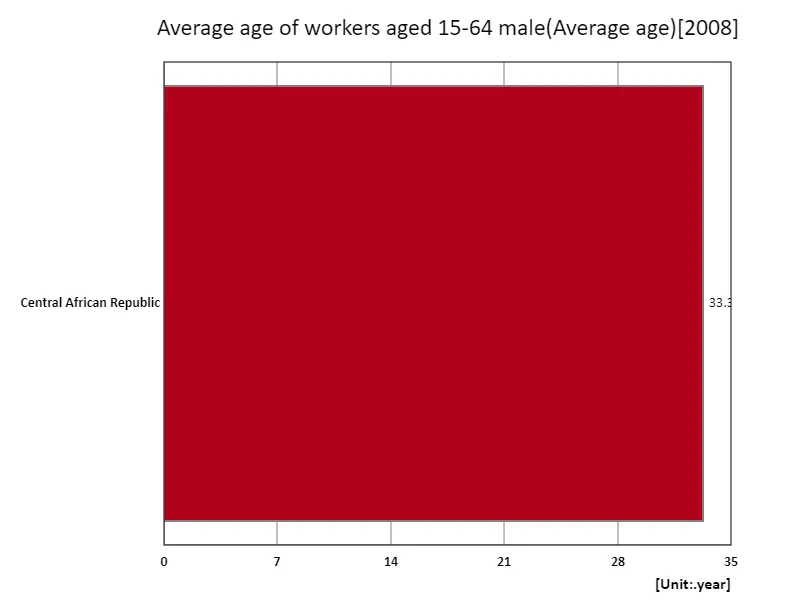

The maximum is 33.3year of Central African Republic, the average is 33.3year, and the total is 33.3year
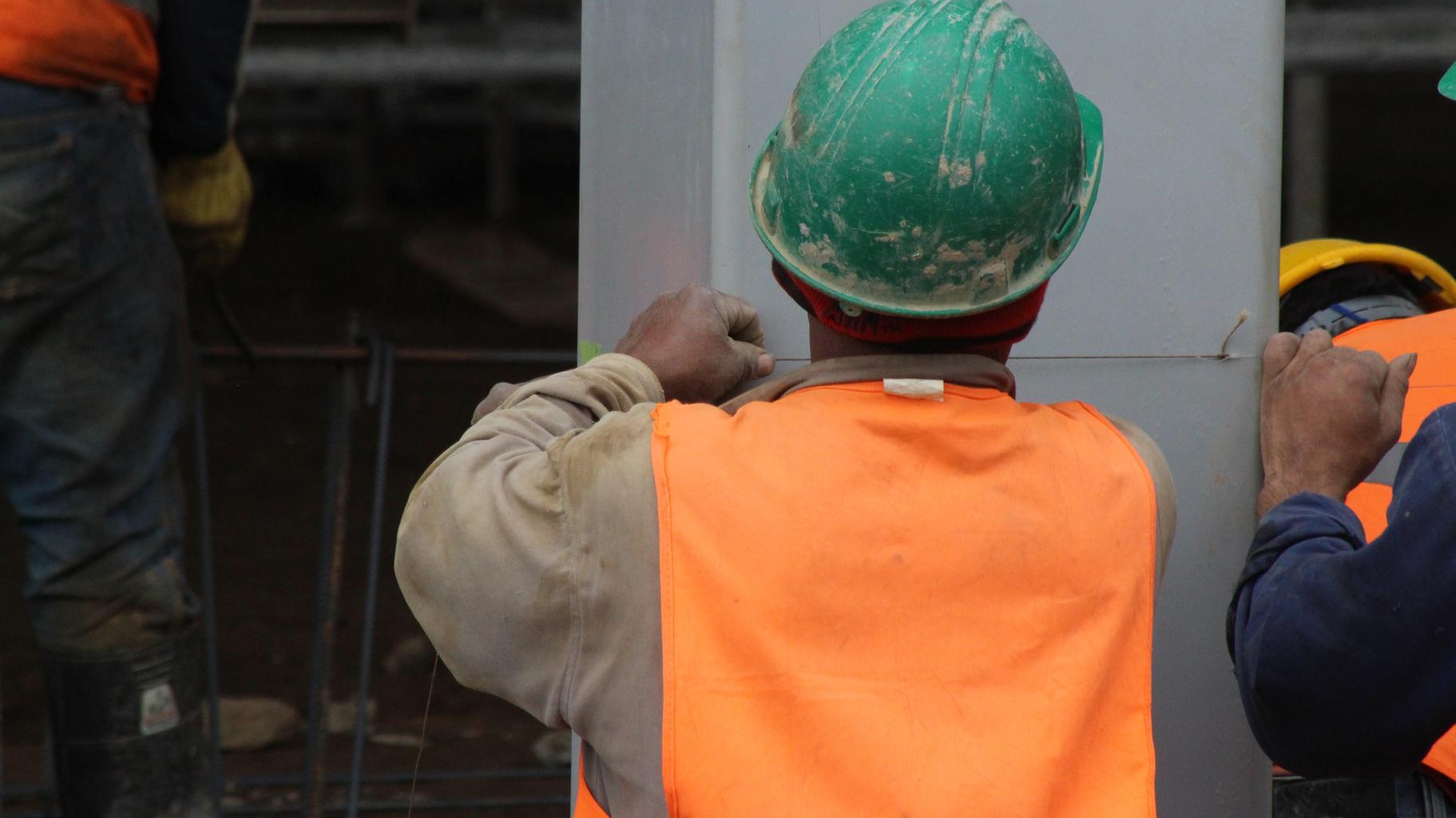


Comments